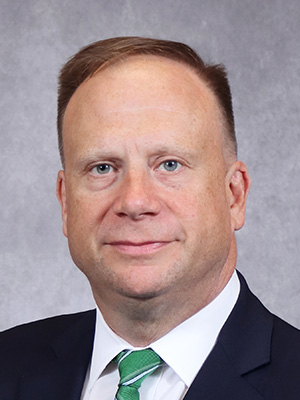Being the true teachers
Mark Largent, vice provost & dean, Undergraduate Education
 Last month I gleefully attended my oldest child’s high school graduation from The Leelanau School, a small boarding school in northern Michigan. It was a joyful occasion at a wonderful school. I was particularly struck by something I heard during the graduation ceremony that I wanted to share with you.
Last month I gleefully attended my oldest child’s high school graduation from The Leelanau School, a small boarding school in northern Michigan. It was a joyful occasion at a wonderful school. I was particularly struck by something I heard during the graduation ceremony that I wanted to share with you.
The ceremony included a celebration of careers of two retiring faculty members, Bruce and Laura Hood. The Hoods taught at Leelanau for more than three decades, shaping the lives of hundreds of people for the better. Both are gentle, caring educators, and I am grateful that my daughter had the opportunity to work with them.
Mr. Hood was a science teacher at Leelanau, and he was frequently an audience member at events where Mrs. Hood, the music teacher, performed. Tapped to be this year’s graduation speaker, now it was Mr. Hood’s turn to perform.
Among the many things he discussed in his commencement speech, Mr. Hood described the charge that he and the other staff and faculty received from Headmaster Rob Hanson when they came back together during the COVID-19 pandemic. Mr. Hanson told them:
“Be the teachers that all true teachers want to be. To do this we need to arrange our priorities in the following way: Number one, make sure they feel safe. Number two, help them to feel that they are loved. Number three, if there’s any time left, teach them something. In that order.”
The order of these priorities, Mr. Hood explained, said a great deal about both Mr. Hanson and the entire Leelanau School community. Learning follows from a sense of safety, a feeling of being loved and of belonging, and an exertion of effort by the faculty to teach. In that order.
In a past article I discussed my former assumptions about the relationship between students’ sense of belonging and learning, and I admitted that I had it backward. I had thought that the students who belonged at a place like MSU showed initiative, paid attention, and got things done. My colleagues in our student success work have helped me realize that the opposite is true; a student who feels like they belong at MSU shows initiative, pays attention, and gets things done.
Mr. Hood’s graduation address pushed me to further unpack my notions about “belonging” by asking me to think about what it means to feel safe, to feel loved, and to be taught at an institution as large as MSU. All three require openness and engagement among coworkers, teachers, and students to navigate complex relationships. Meeting these requirements were made so much more complicated and difficult by remote working and learning during the pandemic.
While differences in size, resources, and overall mission make The Leelanau School and MSU sometimes difficult to compare, at root both share a common goal: empower individuals to realize their potential.
Our colleagues across campus – from all of MSU’s colleges to Student Life and Engagement and University Health and Wellbeing, across administrative offices like Student Accounts and the Registrar, and of course every instructor – are pursuing a coordinated strategy to “be the true teachers” by coming together to provide tens of thousands of Spartans the support and attention that shows them that they are safe and loved, so they can learn, thrive, and graduate.